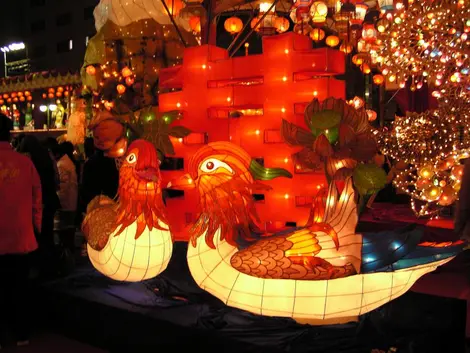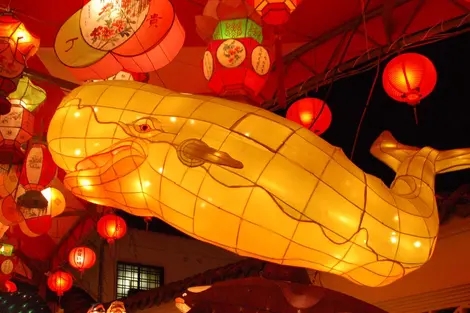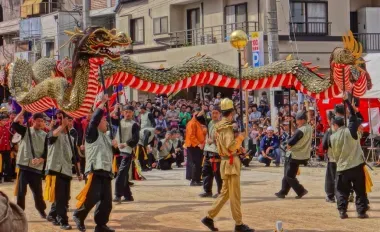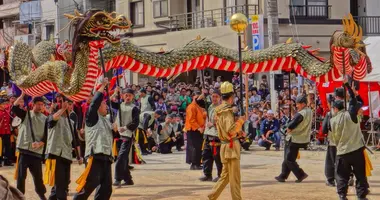Nagasaki Lantern Festival 長崎ランタンフェスティバル
- Published on : 06/06/2018
- by : Ph.L
- Youtube

Nagasaki Lantern Festival
Flick/ Marufish
Two weeks of festivities in the colors of China
From Chinese New Year to the 15th day of the lunar calendar, the Lantern Festival brightens the streets of Nagasaki. Created by the local Chinese community to celebrate the New Year, a festival is now an unmissable event in the region. Discover the largest lantern festival in Japan!
15,000 lanterns lit throughout the city
Although they were created by the Chinese community of Nagasaki to celebrate the Lunar New Year, the Chinese New Year festivities quickly seduced the inhabitants of this great city of Kyushu. And to satisfy the greatest number, these celebrations are officially renamed "Lantern Festival" in 1994.
Behind this name, a hundred lanterns lined the streets of the Chinese quarter of the city, Shinchi Chinatown. Made by the inhabitants of the district, these lanterns were a nice way to brighten up the streets during this festive period while protecting them from evil spirits.
Today, this tradition continues. And it would now be more than 15,000 giant lanterns that would color the streets of Shinchi Chinatown and the surrounding neighborhoods.
Read: Celebrate Chinese New Year in Japan
Red, yellow, gold, the lanterns are in the colors of China. And although the community aspect has dissipated with the change of name of the festivities, the lantern festival is still today attached to the Chinese New Year celebrations.
This is why most of the lanterns bear motifs in the effigy of the latter, like the twelve signs of the Chinese zodiac supposed to bring luck at the beginning of the year.
See also: Junishi, the 12 signs of the zodiac
A festival full of events
Each year, the fireworks display from Minato Park marks the starting point of the festival. Then follows several dances and processions that will punctuate these 15 days of festivities.
Among them, the dragon dance and the lion dance, are two essential rituals of Lunar New Year celebrations. From Chinese folklore, the dragon dance is a ritual used to bring down rain in the hope of obtaining good harvests. The participants then dance in traditional costumes to call the rain and carry a 20-meter-long dragon that attempts to soar into the heavens.
On its side, the lion dance brings together a dozen dancers in brightly colored costumes who dance with the agility of a feline to the rhythm of percussion.
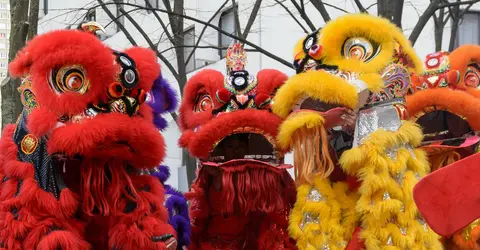
Dancers participating in the lion dance
Wikimedia
Several processions also take place during the festival, including a parade in honor of the goddess Mazu, the patron goddess of sailors who recalls the glorious past of the city's port, and the famous '' Emperor's Parade ' ', a procession bringing together several dancers in period costume, 150 flags and 2 palanquins on which two extras play the roles of the Emperor and Empress of China. This parade aims to reproduce the processions of yesteryear when the Emperor of China took part in the New Year festivities with his people.
Finally, note that the lantern festival also hosts many traditional music concerts every year. A creative way to merge Chinese culture and Japanese culture within the same event!
Address, timetable & access
Address
Timetable
Shimimbyoin-Mae tram station (Nagasaki denki line No. 5)Access
In 2019: from February 5 to February 19, illuminations from 5 pm to 10 pm.




